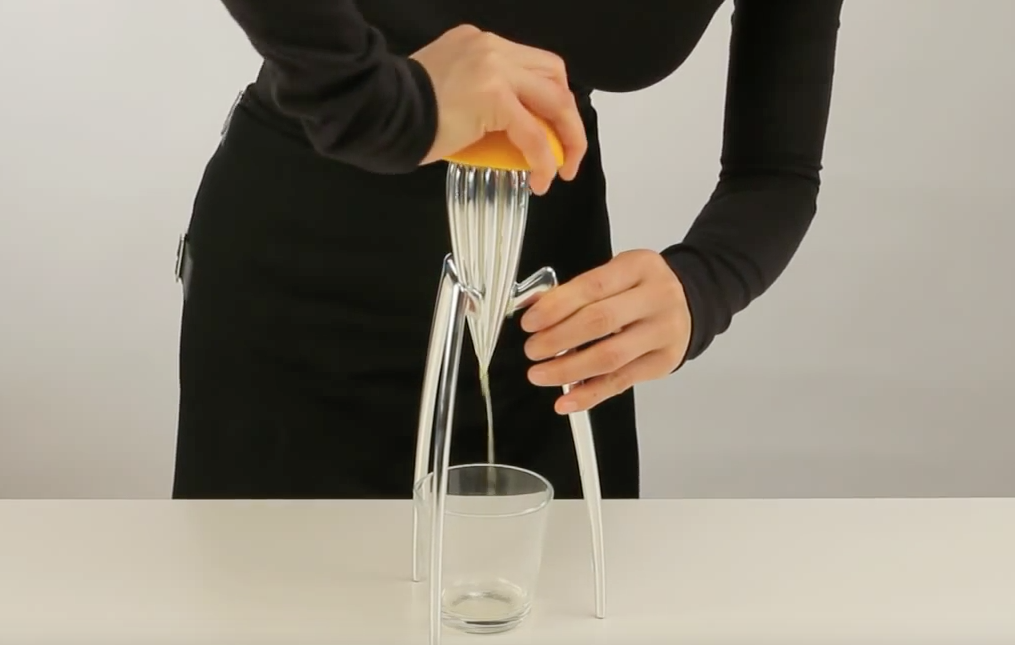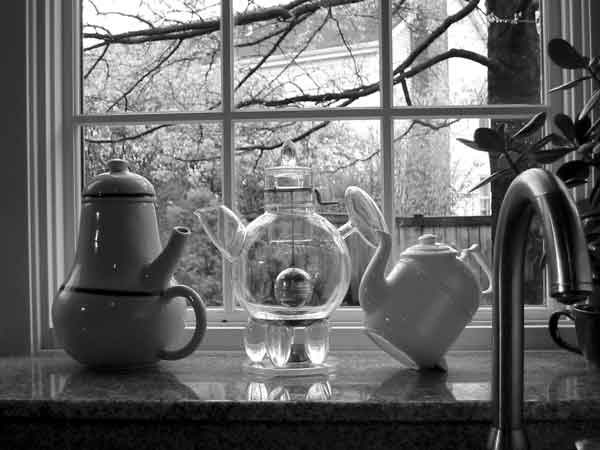“If you want a golden rule that will fill everybody, this is it: Have nothing in your houses that you do not know to be useful, or believe to be beautiful.”
Juicy Salif designed by Phillipe Starck.
I believe in the power of a multidisciplinary approach to design—and the body of work of Dr. Donald Norman makes a fantastic point to that.
He is the cofounder of the Nielsen Norman Group, an executive consulting firm that helps companies produce human-centered products and services. At the heart of Norman's approach is the combination of knowledge of cognitive science, engineering, and business with design.
In creating a product, a designer has many factors to consider: the choice of material, the manufacturing process, the way the product is marketed, cost and functionality. But what many people don't realize is that there is also a strong emotional component to how products are designed and put to use.
Book Cover of Emotional Design: Why we love (or hate) everyday things.
In his book Emotional Design, Norman argues that the emotional side of design may be more critical to a product's success than it's practical elements.
“The objects in our lives are more than mere material possessions. We take pride in them, not necessarily because we are showing off our wealth or status, but because of the meanings they bring to our lives. A person’s most beloved objects may well be inexpensive trinkets, frayed furniture, or photographs and books that are torn, dirty, or faded.”
Norman identifies three aspects of design: visceral, behavioral, and reflective and he explains it wonderfully using three teapots as examples.
Three teapots: works of art in the window above the kitchen sink. Donald Norman's collection.
Visceral design:
is all about our first reactions when we encounter a product. It is related to appearance and physical features — look, feel and sound — dominate. Shape and form matter. The texture of the material matters. The weight of the object matters. It has to feel good and look good.
Here we examine what inner or "gut" reactions tell us about an item.
Nanna teapot designed by Michael Graves.
According to Norman here is where the Nanna teapot excels—he enjoys its appearance, especially when filled with the amber hues of tea, lit from beneath by the flame of its warming candle.
Some objects evoke strong, positive emotions such as love and happiness. In reviewing BMW's Mini Cooper car, The New York Times observed: "Whatever one may think of the Mini Cooper's dynamic attributes, which range from very good to marginal, it is fair to say that almost no new vehicle in recent memory has provoked more smiles."
Lead Mini designer Alec Issigonis with the Austin Mini Cooper S.
Behavioral design:
has to do with the pleasure and effectiveness of use. It is about our assessment of how well it performs the desired functions.
It can also make using the object a delight itself, which Norman explains with the Ronnefeldt "tilting" teapot. It's the kind of thing to entertain your guests with.
"Tilting" teapot by Ronnefeldt. A, B, C steps. Donald Norman's collection.
Norman describes how it works: you put the leaves in the internal shell (not visible, but just above and parallel to the ridge that can be seen running around the body of the teapot), fill with hot water, and lay the teapot on its back (step A). As the tea darkens you tilt the pot as in step B. Finally, when the tea is done, you stand the teapot vertically as in step C, so the water no longer touches the leaves and the brew does not bitter.
On the other hand, you can excel at behavioral design by efficiency in function. Which is why nothing beats a metal brewing ball first thing in the morning when you are in a hurry. It's fast and easy to clean.
Metal brewing ball. Photograph by Donald Osborne.
Reflective design:
considers the rationalization and intellectualization of a product.
It is concerned about the ability to project the product's impact on our lives after we have used it. It triggers the contemplative part of the brain. Can I tell a story about it? Does it appeal to my self-image, to my pride? What values do we attach to the product in retrospect?
Norman illustrates this with his "teapot for masochists", saying it isn't particularly beautiful, and it's certainly not useful, but what a wonderful story it tells!
Jacques Carelman's "impossible teapot".
Visceral, behavioral, and reflective: these three very different dimensions are interwoven through any design. It is not possible to have a story about design without all three. But more important, note how these three components interweave both emotions and cognition.
This is so despite the common tendency to pit cognition against emotion. Emotion is said to be hot, animalistic, irrational, and cognition to be cool, human, logical. Emotions are out of place in a polite, sophisticated society.
But actually, emotions are inseparable from and a necessary part of cognition. Everything we do, everything we think is tinged with emotion, much of it subconscious. Cognitive scientists now understand that emotion is a necessary part of life, affecting how you feel, how you behave, and how you think.
Emotion makes you smart, because otherwise our decision-making ability would be impaired. One of the ways by which emotions work is through neurochemicals that bathe particular brain centers and modify perception, decision making, and behavior. These neurochemicals change the parameters of thought.
Consciousness comes late, both in evolution and also in the way the brain processes information; and many judgments have already been determined before they reach consciousness.
“Sure, utility and usability are important, but without fun and pleasure, joy and excitement, and yes, anxiety and anger, fear and rage, our lives would be incomplete.”
And now there is evidence that emotionally pleasing objects actually work better.
Products and systems that make you feel good are easier to deal with and produce more harmonious results. They allow people to be in a better state of mind, think more creatively and perform better.
When we try to apply this in the world of design we generally associate emotion with beauty. We build attractive things, cute things, colorful things. However important these attributes, they are not what drive people in their everyday lives.
We like attractive things because of the way they make us feel.
And in the realm of feeling it is just as reasonable to become attached to and love things that are ugly as it is to dislike things that would be called attractive. Emotions reflect our personal experiences, associations, and memories.
This is why it is more complex than aesthetics. There are several stages of interaction with the product, and what makes us love it at first glance may not be the same that will give us satisfaction for a long time. We are driven by emotions, and acknowledging this is fundamental as designers and human beings.
And sometimes there are conflicts: usable designs that are not necessarily enjoyable to use, beautiful products that perform terribly, or even design as extreme as the "teapot for masochists", which tells a story but is useless.
But the important question is why should these attributes be in conflict? How can beauty and brains, pleasure and function, emotion and cognition, go hand in hand?
References
(1) Norman, D. (2004) Emotional Design: Why we love (or hate) everyday things. New York: Basic Books.









